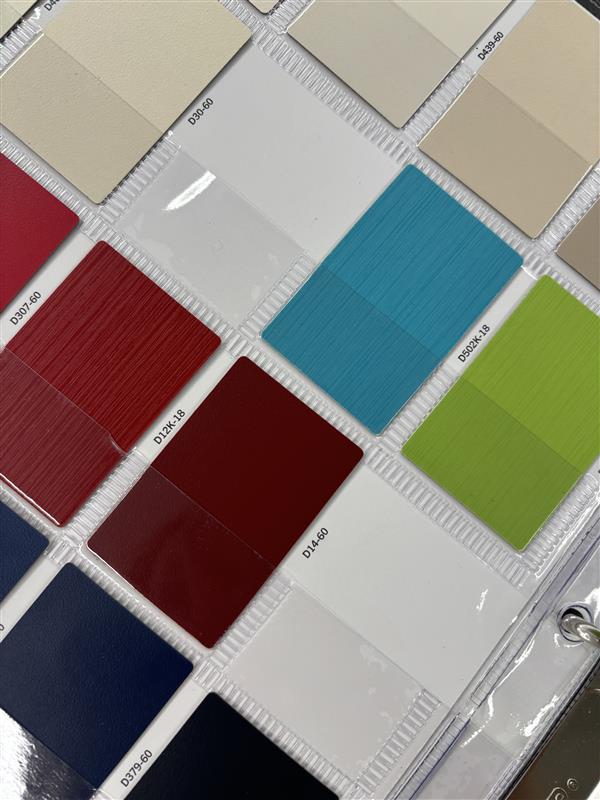
Looking Ahead at Design
Every year, architecture and design evolve to reflect not only new aesthetic preferences but also cultural shifts, technological progress, and sustainability goals. In 2025, interior finishes are playing a larger role than ever before in shaping how spaces feel, function, and endure. At Penney Design Group, we’ve noticed clear trends emerging across commercial, residential, and automotive projects, pointing toward materials and finishes that are not only visually striking but also more sustainable, adaptive, and user focused.

Sustainability as a Standard
One of the strongest trends is the move toward finishes that reduce environmental impact without sacrificing beauty. Recycled surfaces, responsibly sourced wood veneers, and bio-based composites are no longer niche, they are mainstream choices. Many of today’s clients expect eco-friendly options as part of their project, and manufacturers are responding with finishes that perform as well as traditional materials while offering smaller carbon footprints.
We’ve seen this in flooring made from reclaimed materials that balance durability with warmth, as well as surface laminates derived from plant-based resins. These finishes reflect a growing awareness that sustainability is not a luxury, but a necessity. In 2025, it’s not just about what looks good today, it’s about how materials support long-term stewardship of resources.

High-Performance Surfaces
As buildings become more flexible and multi-functional, finishes must rise to the challenge of constant use. High-performance surfaces that resist wear, staining, and scratching are gaining momentum. Matte ceramic finishes, ultra-durable quartz composites, and antimicrobial coatings are showing up in both public and private spaces.
For dealerships, like the ones we design, this durability is essential. Customers interact with these surfaces daily, and they need to hold up under heavy foot traffic while still maintaining a polished look. Finishes that provide resilience without appearing overly industrial are defining the next wave of interior design.

Textures that Tell a Story
Flat, glossy finishes are giving way to surfaces with depth and dimension. Textured wall panels, tactile stone surfaces, and layered wood treatments create interiors that invite touch as much as they invite sight. This move toward texture reflects a broader cultural desire for authenticity and connection—materials that feel real and human, even in high-tech spaces.
In projects we’ve completed recently, we’ve seen how texture can define a space. A dealership lounge with textured acoustic panels, for example, doesn’t just absorb sound, it creates a feeling of calm and warmth that makes the space more inviting. In 2025, finishes are being asked to deliver both function and emotional resonance.

Metallics with Subtlety
Metallic finishes remain popular, but they are shifting toward softer, more refined expressions. Brushed brass, muted bronze, and satin aluminum are replacing the high-shine chrome that dominated in years past. These metals add sophistication without overwhelming a space, complementing other materials rather than competing with them.
In luxury environments, metallic accents are becoming the detail that elevates a space from standard to exceptional. Whether used in trim, hardware, or accent walls, the trend in 2025 is toward metallics that whisper refinement rather than shout for attention.

Smart and Adaptive Materials
Perhaps the most exciting trend in finishes is the rise of smart materials. Photochromic glass, which adjusts its opacity depending on light levels, and surface coatings that actively improve indoor air quality are making their way into mainstream architecture. These adaptive finishes merge technology with design, providing a glimpse into the future of interior environments.
For clients, these materials offer not just aesthetic appeal but measurable improvements in comfort and performance. They represent a shift from finishes being static backdrops to being active participants in how a space functions.

Bringing It All Together
The top finishes of 2025 share a common thread: they are designed not only to look beautiful, but to perform, to last, and to respond to the evolving needs of people and the planet. From sustainable surfaces to adaptive smart materials, these finishes represent the intersection of design, technology, and responsibility.
At Penney Design Group, we approach every project with an eye toward what’s next. Whether we are designing a flagship dealership, a mixed-use development, or a private residence, these emerging finishes are shaping how our spaces look and feel. As the industry continues to evolve, these materials will help us create environments that are not only striking today but resilient tomorrow.
